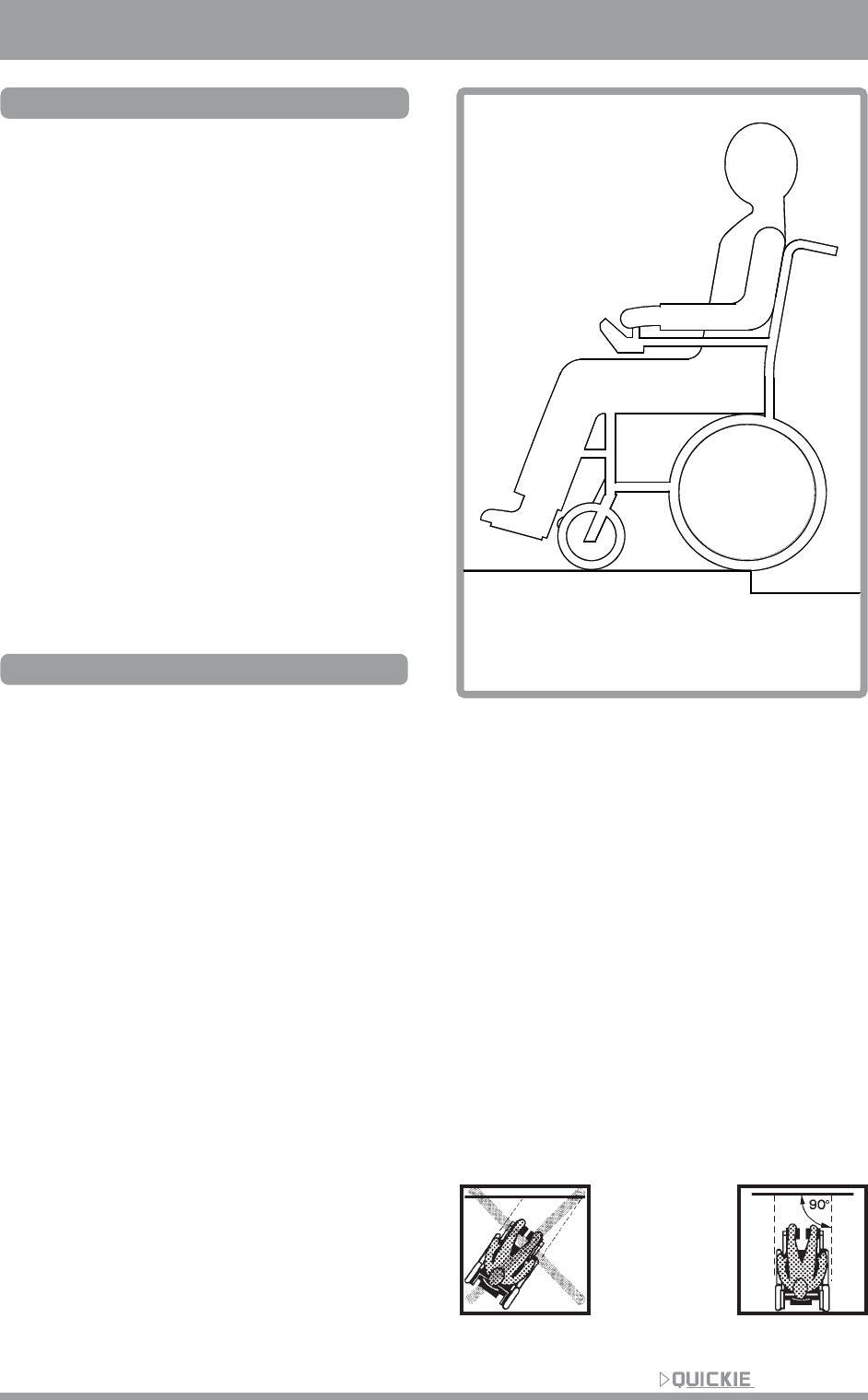
33 F45 Issue 6
Kerb climber
Fig. 49
Dismounting the kerb
1. Reverse the chair slowly and
carefully until the rear wheels
are on the edge of the kerb
(Fig. 49).
2. Reverse as slowly as possible
off the kerb with the rear wheels.
You will feel more secure if you
can lean forward, but if you
can’t, don’t worry, the wheelchair
is extremely stable as long as
you stay within its limitation, you
will be quite safe.
3. The front of the chair will
naturally follow down the kerb as
you continue to drive slowly
backwards.
Caution
1. Please show the utmost
consideration for the other traffic
on the road. Remember that the
last thing a car or lorry driver
expects to see is a wheelchair
backing off the kerb into the
road. If in any doubt, do not risk
crossing the road until you are
certain that it is safe.
2. Always cross the road as quickly
as possible, there may be other
traffic.
3. Do not attempt to go up or down
more than a 10 cm (4") high
kerb.
4. Do not attempt to use the kerb
climber on a series of steps.
5. Do not attempt high kerbs if on
steep slopes or cambers.
6. Do not attempt any kerbs in the
vicinity of drain covers, uneven
or gritty road surfaces.
7. Do not attempt to dismount a
kerb any higher than 5 cm (2")
in the forwards direction.
8. Do not mount or dismount kerbs
at an angle other than straight
on (90 degrees) to the edge of
the kerb.
9. Prior to climbing ensure your
legrests will clear the kerb.


















